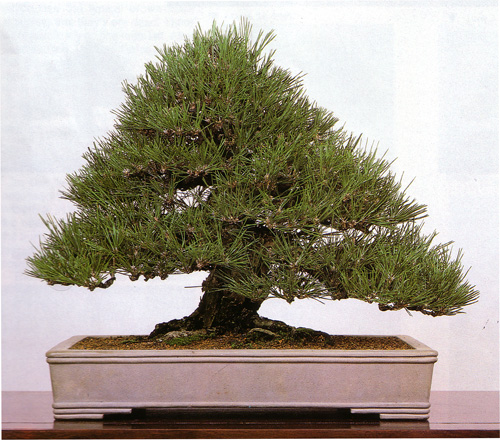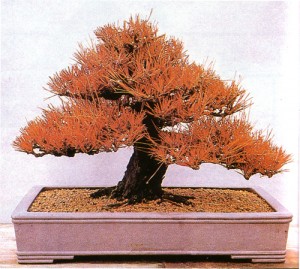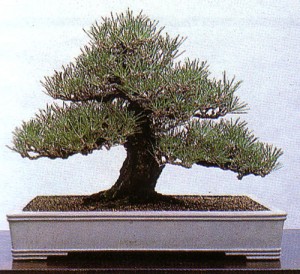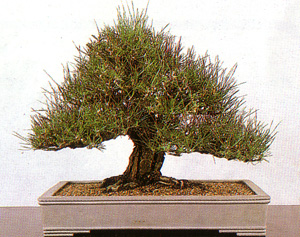
Sixteen years ago, this tree…

…looked like this!
If you want to know how this seemingly miraculous recovery happened, keep reading (you might want to take a look at yesterday’s post first if you haven’t already).

March 24th, after the first transplanting. This photo was taken when the tree was in the early stages of recovery, not too long after the stress occurred (the original doesn’t specify how long).
In the original, the author says not to pull off the dead needles, they will fall off by themselves. So, where are the needles in the above photo? The answer, though never stated, is that Mr. Onishi cut almost all of them down to little stubs (if you look closely you can see a few that weren’t cut), and it’s these stubs that he’s referring to when he says they will fall off by themselves.

June 3rd, just over two months later. As you can see, something good is happening.

July 24th. Pushing new needles like crazy.

One year and two months after the last photo. It looks like Mr. Onishi hasn’t done any pruning or thinning yet. This makes perfect sense; the more you let the top grow, the more healthy new roots are encouraged to grow. Always a good thing to remember when dealing with stress.

Almost two years after the photo just above (approximately 32 months from when the stress occurred) . Finally, he’s done some thinning. Clearly, he wasn’t in a rush to bring the tree back into shape. His primary concern all along has been to reestablish the tree’s health, and it looks like his efforts have paid off.

Eight years after the stress. A trauma that the tree has long forgotten, but one that Mr. Onishi will long remember. Japanese black pine, 16″ (41cm).
I recently harvested a very nice Pitch Pine. Due to the site where it was growing I was unable to get a whole lot of fine feeder roots. A few but not many. I’d call that stressed.
I note that in the drawing in Part 1 the roots on this pine were cut back to stubs. Somewhat the same condition as my Pitch Pine. Would my cutting all the needles back to the sheath help my pine survive until new roots get established.
I have set up a mist system that sprays it four times a day for about one minute. All of the needles are getting wet when the mister runs. If anyone has any information about misting newly collected pines, processes or methods I would like to hear from them.
The drawing might be misleading. The text says to cut back to where the roots show life (white inside). I think that’s what we should go with.
I’m not sure I would cut back living needles (someone else our there might have some experience with that). However, I would prune as much unnecessary growth as possible. This will lessen the load on the roots.
Mist system sounds good. I would think that this time of year you might want to run more. How much depends on moisture content in the air where you live. If it’s dry, you could probably do every 15 minutes for 5-10 seconds. If the air is moist, then less.
Pines needs mychorrizal fungi to help the roots absorb water and nutrients. Make sure you introduce some into the soil (not just on top).